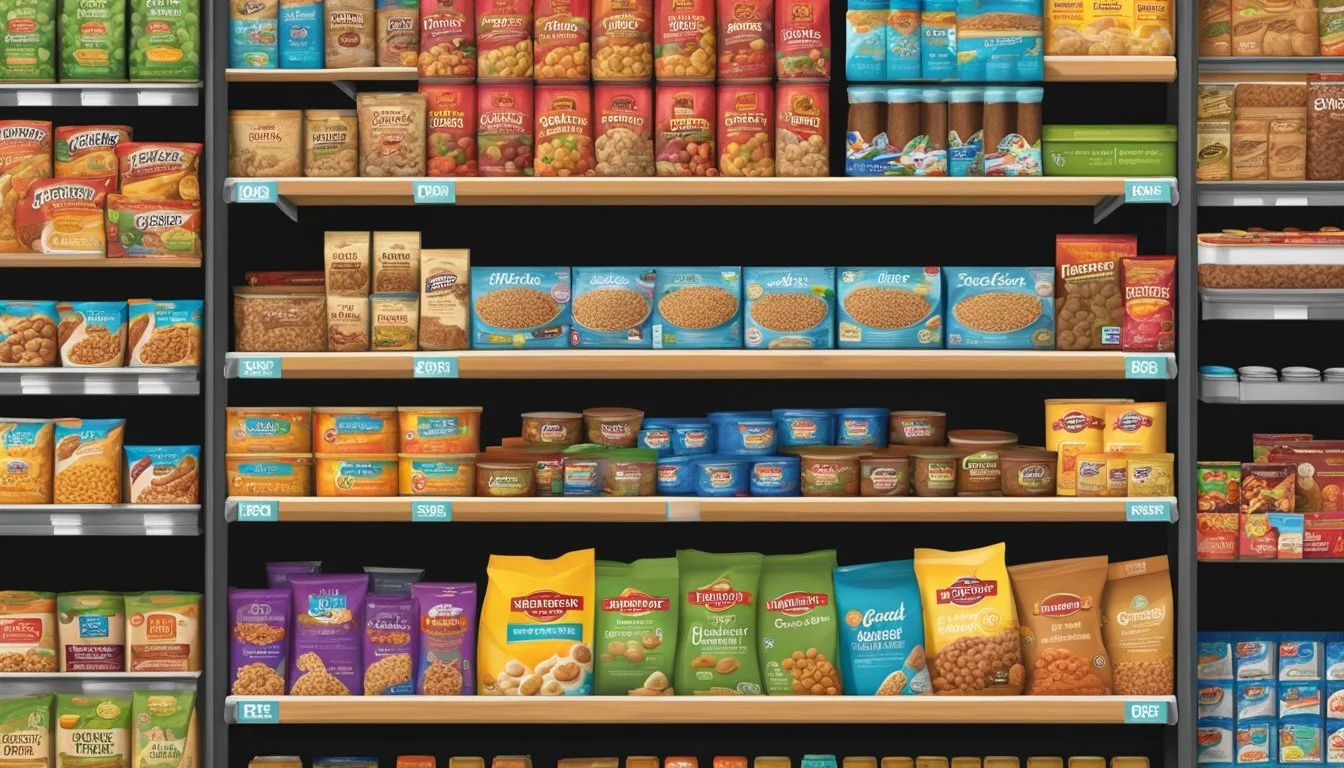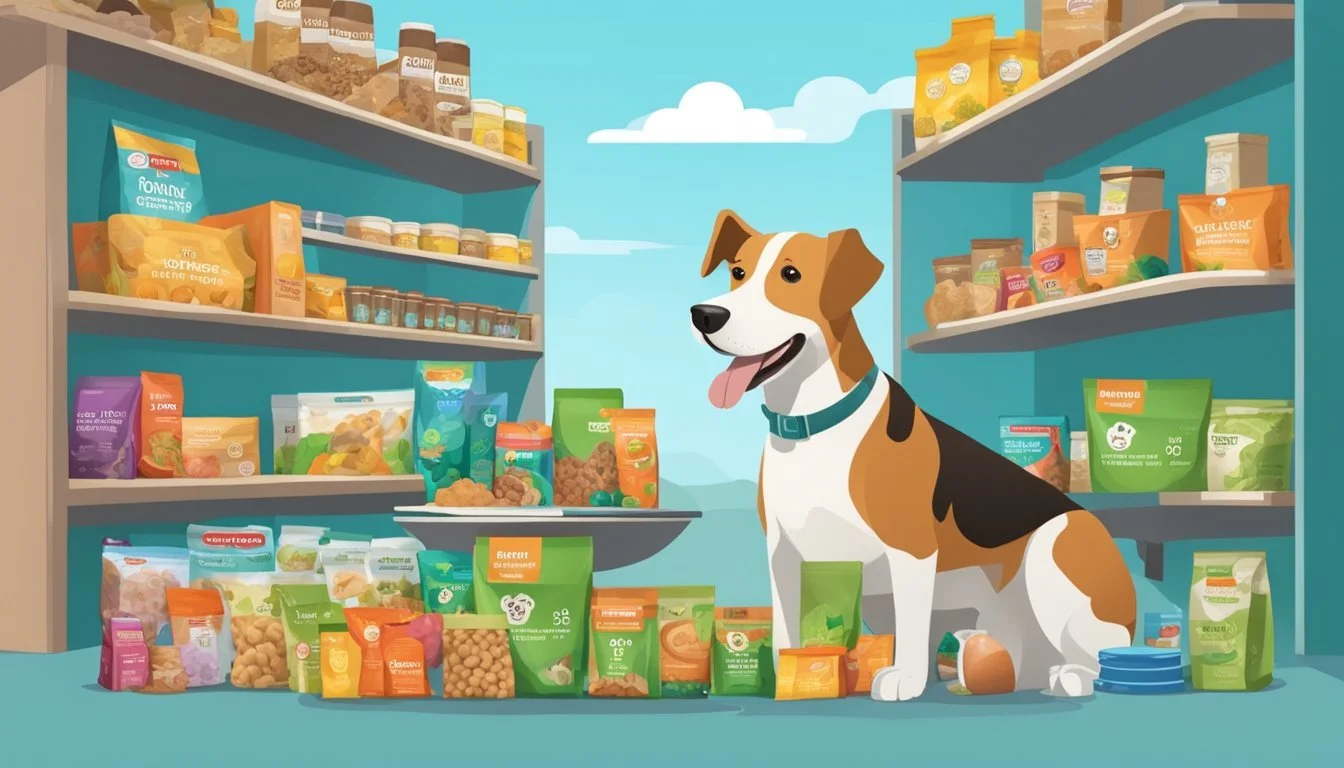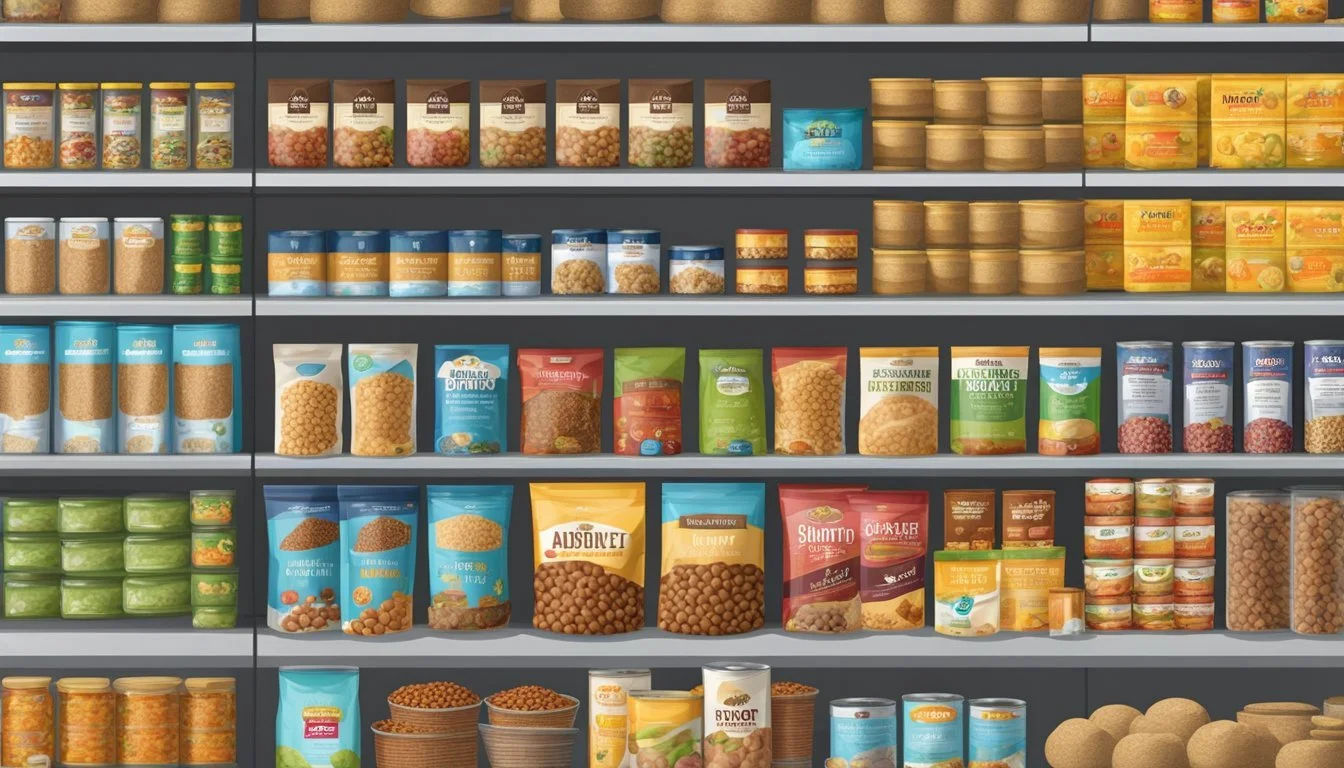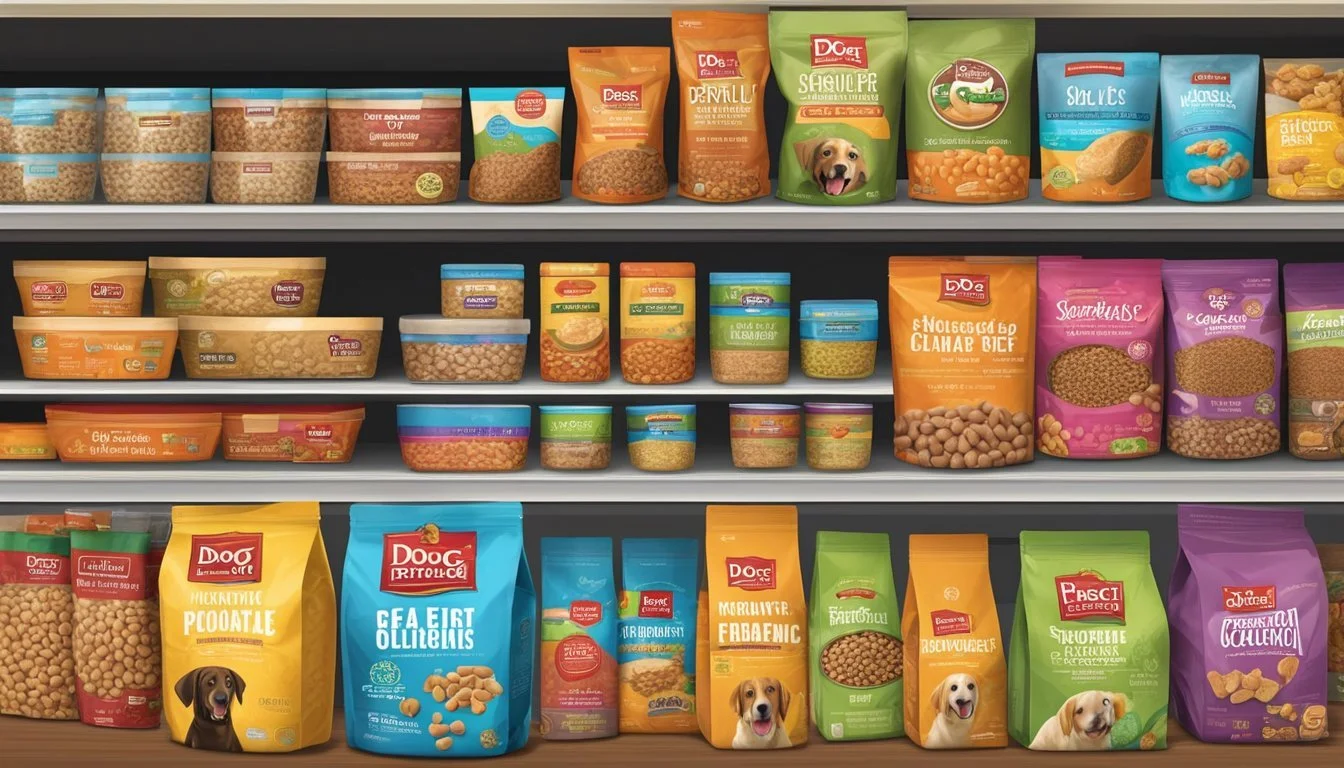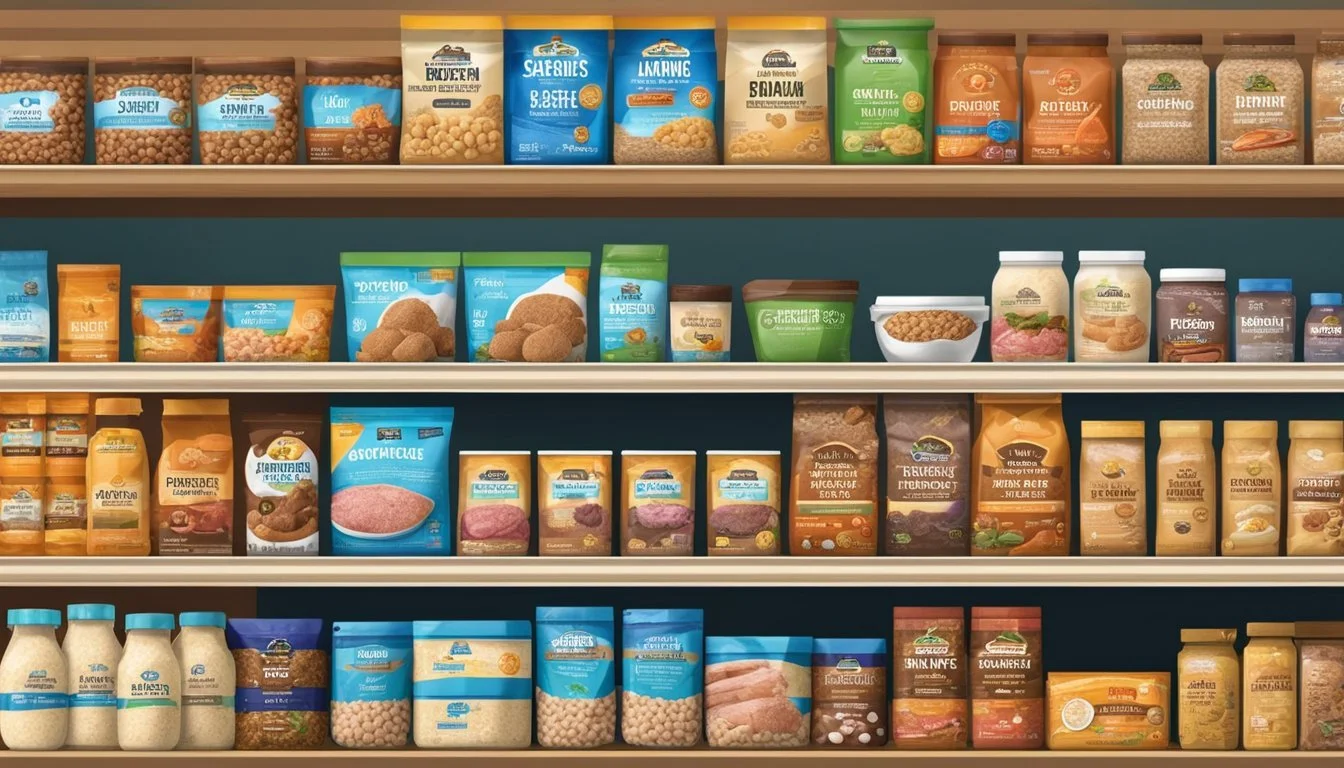Quality Dog Food Deals at Grocery Outlet
Budget-Friendly Options for Pet Owners
Grocery Outlet offers budget-friendly options for dog owners seeking quality nutrition for their pets. The discount supermarket chain stocks a variety of dog food brands at competitive prices, catering to different canine nutritional needs and preferences. Shoppers can find both dry kibble and wet food options from well-known manufacturers alongside lesser-known brands, providing a range of choices for cost-conscious pet owners.
Dog food available at Grocery Outlet often includes products with essential nutrients like proteins, whole grains, and vegetables. These ingredients support canine health, providing energy, promoting digestive health, and contributing to a shiny coat. The store's rotating inventory means customers may discover new or limited-time offerings during each visit, adding an element of surprise to the shopping experience.
For added convenience, some locations offer same-day delivery services through platforms like Instacart. This allows pet owners to quickly restock their dog food supplies without leaving home, ensuring their furry companions never miss a meal. Grocery Outlet's commitment to affordability and variety makes it a popular destination for dog owners looking to balance quality and cost in their pet food purchases.
Understanding Dog Nutrition
Dog nutrition involves key components that support canine health and vitality. A balanced diet includes essential nutrients like proteins, fats, carbohydrates, vitamins, and minerals tailored to a dog's specific needs.
Importance of Protein for Canines
Protein forms the foundation of a dog's diet. It provides essential amino acids crucial for muscle development, tissue repair, and overall growth. High-quality protein sources in dog food typically come from animal-based ingredients like chicken, beef, or fish.
These proteins should be listed as the first ingredient on dog food labels. The protein content helps maintain strong bones, healthy skin, and a shiny coat. Adult dogs generally require a diet with 18-25% protein, while puppies and active breeds may need up to 30%.
Protein also supports the immune system and aids in hormone production. When selecting dog food, look for named protein sources rather than generic terms like "meat meal."
Role of Omega-3 Fatty Acids
Omega-3 fatty acids play a vital role in canine health. These essential fats contribute to cognitive function, heart health, and joint mobility. Common sources include fish oil, flaxseed, and algae.
Omega-3s help reduce inflammation in the body, which can be particularly beneficial for dogs with arthritis or skin conditions. They support brain development in puppies and cognitive function in older dogs.
These fatty acids also promote a healthy coat and skin, reducing shedding and itching. The recommended ratio of omega-6 to omega-3 fatty acids in dog food is between 5:1 and 10:1. When choosing dog food, look for products that list specific omega-3 sources.
Evaluating Calories and Sugar Content
Monitoring calorie and sugar content in dog food is crucial for maintaining a healthy weight. Calorie needs vary based on a dog's size, age, and activity level. Overfeeding can lead to obesity, which increases the risk of various health issues.
Most adult dogs require about 30 calories per pound of body weight daily. Active dogs may need more, while senior or less active dogs require fewer calories. Wet food typically contains fewer calories per volume compared to dry kibble.
Sugar content should be minimal in dog food. Natural sugars from fruits are acceptable in small amounts. Avoid foods with added sugars or sweeteners, as they can contribute to dental problems and weight gain.
Organic Vegetables in Dog Diets
Organic vegetables can be a beneficial addition to a dog's diet. They provide essential vitamins, minerals, and fiber. Common vegetables in dog food include sweet potatoes, carrots, and green beans.
These vegetables offer antioxidants that support immune function and overall health. Fiber from vegetables aids in digestion and helps maintain a healthy gut microbiome. Some vegetables, like pumpkin, can help regulate bowel movements.
When incorporating vegetables, ensure they're properly prepared and don't exceed 10% of the total diet. Avoid onions, garlic, and other toxic vegetables. Organic options may reduce exposure to pesticides, but both conventional and organic vegetables can be nutritious for dogs.
Types of Dog Food Available
Dog food comes in various forms to meet different nutritional needs and preferences. Owners can choose from dry kibble, wet food, and specialized options tailored to specific ages and dietary requirements.
Comparing Kibble and Wet Food
Kibble is a popular choice for many dog owners. It's convenient, has a long shelf life, and helps maintain dental health. Kibble typically contains a mix of proteins, carbohydrates, and essential nutrients. It's easy to portion and store.
Wet food offers higher moisture content, which can be beneficial for dogs that don't drink enough water. It often has a stronger aroma and flavor, making it appealing to picky eaters. Wet food usually comes in cans or pouches and may contain more protein than dry kibble.
Both options have their merits. Some owners mix kibble and wet food to provide variety and balance in their dog's diet.
Specialty Food for Different Dog Ages
Puppy food is formulated with higher calories and nutrients to support rapid growth and development. It often contains more protein, fat, and essential fatty acids than adult dog food.
Adult dog food maintains a balance of nutrients for optimal health and energy. It's designed to meet the needs of fully grown dogs with normal activity levels.
Senior dog food typically has fewer calories and more fiber to support weight management and digestive health in older dogs. It may also include supplements for joint health and cognitive function.
Benefits of Grain-Free Options
Grain-free dog food excludes common grains like wheat, corn, and soy. It often replaces these with alternative carbohydrate sources such as sweet potatoes or peas.
Proponents claim grain-free diets can reduce allergies and improve digestion in some dogs. These foods may contain higher protein levels and can be beneficial for dogs with specific grain sensitivities.
However, it's important to note that grain-free diets aren't necessary for all dogs. Many dogs digest grains well, and they can be a valuable source of nutrients. Consult a veterinarian to determine if a grain-free diet is appropriate for your dog.
Grocery Outlet Dog Food Brands
Grocery Outlet offers a variety of dog food brands at discounted prices. These include both well-known names and lesser-known options, with choices for different dietary needs and preferences.
Assessing Brand Quality
Grocery Outlet stocks dog food brands that vary in quality and nutritional value. Some recognized brands like Taste of the Wild and Orijen can be found at reduced prices. These brands are known for their high protein content and quality ingredients. Other options may include more budget-friendly choices with simpler formulations.
When evaluating brands, look for:
Named meat sources as the first ingredient
Whole grains or quality carbohydrates
Added vitamins and minerals
Absence of artificial preservatives or colors
It's important to compare ingredient lists and nutritional information to ensure the food meets your dog's specific needs.
Grain-Free and Organic Options
Grocery Outlet often carries grain-free dog food options for pets with sensitivities or allergies. These formulas replace grains with alternative carbohydrate sources like sweet potatoes or peas. Some grain-free options may include added vegetables for enhanced nutrition.
Organic dog food choices are sometimes available, though selection may be limited. These products contain ingredients grown without synthetic pesticides or fertilizers. Organic options might feature:
Organic meats as the primary protein source
Organic vegetables for added nutrients
No artificial additives or preservatives
Availability of specific brands and organic options can vary by store and season due to Grocery Outlet's discount model.
Nutritional Additives and Preservatives
Dog food additives play a crucial role in enhancing nutrition and extending shelf life. These ingredients serve specific purposes, from boosting flavor to preventing spoilage.
Identifying Common Preservatives
Preservatives in dog food prevent rancidity and bacterial growth. Ethoxyquin, a synthetic antioxidant, has been used but raises health concerns. It's linked to liver and kidney issues in dogs.
Natural preservatives like vitamin E (tocopherols) and vitamin C (ascorbic acid) are safer alternatives. BHA and BHT, while effective, may pose risks with long-term consumption.
Propylene glycol, often used to maintain moisture, is generally considered safe in small amounts. However, some pet owners prefer to avoid it.
Natural vs. Artificial Additives
Natural additives derive from plant or animal sources. These include rosemary extract, which acts as an antioxidant, and mixed tocopherols for preservation.
Artificial additives are synthetically produced. They often provide more consistent results but may have potential health risks.
Natural flavor enhancers like yeast extract can improve palatability without artificial chemicals. Artificial colors, while visually appealing to humans, offer no nutritional benefit to dogs.
Nutritional supplements like vitamins and minerals are essential in commercial dog foods. They ensure a balanced diet, especially in grain-free formulations.
Considerations for Special Diets
Special diets require careful attention to ingredient selection and nutritional balance. Grocery Outlet offers options that can accommodate various dietary needs for dogs with specific health concerns or weight management goals.
Allergies and Intolerances
Dogs with food allergies or intolerances need diets that avoid specific ingredients. Look for limited ingredient dog foods at Grocery Outlet that exclude common allergens like beef, chicken, or grains.
These specialized formulas often feature novel protein sources such as duck, lamb, or fish. Read labels carefully to ensure the food doesn't contain hidden allergens in flavoring agents or preservatives.
Some Grocery Outlet locations stock grain-free options for dogs sensitive to wheat, corn, or soy. However, grain-free diets should only be used under veterinary guidance due to potential links with heart issues in some breeds.
High-Protein and Low-Calorie Diets
For weight management, Grocery Outlet may offer high-protein, low-calorie dog foods. These formulas help maintain muscle mass while promoting fat loss.
Look for foods with protein content above 25% and reduced fat levels. Calorie-restricted diets typically contain fewer than 350 calories per cup, supporting weight loss without sacrificing nutrition.
Avoid foods with unnecessary fillers or high carbohydrate content. Instead, choose options with quality protein sources listed as the first ingredients.
Some low-calorie formulas include added fiber to help dogs feel full. This can aid in portion control and prevent overeating.
Always transition to a new diet gradually and monitor your dog's weight and energy levels closely when making dietary changes.
Unique Protein Sources in Dog Food
Diverse protein options can provide essential nutrients and variety for dogs. Novel proteins may benefit pets with sensitivities or allergies to common ingredients.
Exploring Rabbit and Lamb Formulas
Rabbit and lamb offer alternative protein sources for dogs. Rabbit is lean and easily digestible, making it suitable for sensitive stomachs. It contains high levels of B vitamins and minerals like selenium.
Lamb provides a rich source of protein and essential amino acids. It contains zinc, which supports immune function and metabolism. Lamb-based foods often include added taurine for heart health.
Both meats can be found in limited ingredient diets, ideal for dogs with food sensitivities. These formulas typically pair the protein with simple carbohydrates like sweet potatoes.
Incorporating Fish like Salmon
Salmon is a nutritious protein source packed with omega-3 fatty acids. These healthy fats support skin, coat, and joint health in dogs. Salmon also provides vitamin D and B vitamins.
Many salmon-based dog foods blend the fish with other proteins for a balanced diet. Some formulas include salmon oil for additional omega-3 benefits.
Fish-based diets can be especially beneficial for dogs with coat issues or inflammatory conditions. The natural oils in salmon may help reduce skin irritation and promote a shiny coat.
When choosing a salmon dog food, look for products using wild-caught fish for optimal nutrient content. Avoid formulas with artificial preservatives or excessive fillers.
Economic Value and Discounts
Grocery Outlet offers significant savings on dog food compared to traditional retailers. Shoppers can find quality brands at discounted prices, often 40-70% below regular retail. The store's unique business model allows for these deep discounts on both dry and wet dog food options.
Finding Discounted Dog Food
Grocery Outlet sources overstock, closeout, and discontinued items from major manufacturers. This allows them to sell popular brands at reduced prices. Shoppers can find well-known names like Purina, Pedigree, and Blue Buffalo alongside niche or premium brands.
The inventory changes frequently, so it's best to check stores regularly for the best deals. Many locations offer a rewards program, providing additional savings on dog food purchases. Some stores also have specific pet food sections, making it easier to browse available options.
Comparing Price Points per Size
When evaluating dog food deals at Grocery Outlet, it's crucial to compare prices based on weight or serving size. This ensures accurate value assessment across different brands and package sizes.
For dry food:
Small bags (4-5 lbs): $5-$10
Medium bags (15-20 lbs): $15-$25
Large bags (30-40 lbs): $25-$40
Wet food typically ranges from $0.50 to $1.50 per can, depending on brand and size. Bulk purchases often offer better value, with multi-packs of canned food providing additional savings. Always check expiration dates when buying discounted items to ensure freshness and quality.
Purchasing and Shipping Options
Grocery Outlet offers various ways to acquire dog food, both in-store and online. Customers can choose between local shopping and home delivery options to suit their needs.
Local Availability of Dog Food
Grocery Outlet stores typically stock a selection of dog food brands at discounted prices. The availability may vary by location, so it's advisable to check with your nearest store for specific options. Some stores might offer a mix of dry kibble, canned food, and treats. Shoppers can often find well-known brands alongside budget-friendly alternatives.
In-store purchases allow customers to inspect products before buying and take advantage of immediate availability. Some Grocery Outlet locations may accept EBT for qualifying pet food items, providing an additional payment option for eligible customers.
Online Shopping and Shipping Costs
Grocery Outlet has partnered with Instacart to provide online ordering and delivery services for dog food. This convenient option allows customers to browse available products and have them delivered to their doorstep.
Delivery times can be as quick as 1 hour, depending on the customer's location and item availability. Instacart offers same-day delivery for Grocery Outlet products, including dog food.
Shipping costs may vary based on order size, delivery time, and distance. New customers might benefit from promotional offers, such as free delivery on their first order. It's important to review the pricing policy and any applicable fees before completing an online purchase.
Dog Owners' Guide to Treats
Treats play an important role in dog training and bonding, but require careful consideration. Choosing nutritious options and monitoring portion sizes helps maintain a balanced diet for your canine companion.
Selecting Nutritious Treats
Opt for treats made with high-quality, natural ingredients. Look for options that list meat as the first ingredient, such as chicken, beef, or fish. Avoid treats with artificial preservatives, colors, or flavors. Single-ingredient treats like freeze-dried meat or dehydrated fruits and vegetables can be excellent choices.
Consider your dog's size when selecting treats. Smaller dogs need tiny, low-calorie options, while larger breeds can handle bigger treats. Dental chews like Greenies can serve dual purposes, promoting oral health while rewarding good behavior.
For training sessions, use small, soft treats that dogs can quickly consume. Air-popped popcorn or small pieces of cooked lean meat work well as low-calorie training rewards.
Avoiding Overfeeding
Treats should make up no more than 10% of a dog's daily caloric intake. Calculate your dog's daily calorie needs based on their weight, age, and activity level. Then, allocate a small portion for treats.
Keep track of treats given throughout the day. Use a treat jar or log to monitor the amount. If multiple family members give treats, communicate to avoid overfeeding.
Break larger treats into smaller pieces to extend the reward experience without adding extra calories. This also allows for more frequent positive reinforcement during training sessions.
Consider using portion of your dog's regular kibble as treats, especially during training. This helps maintain calorie control while still providing positive reinforcement.

